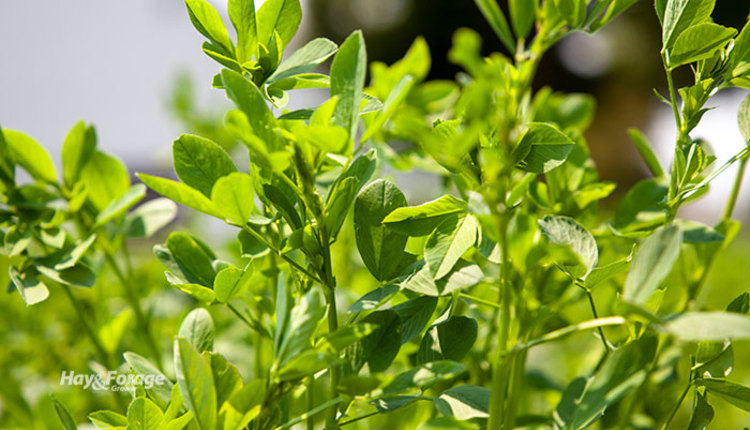Weather extremes will impact first-cut quality |
| By Mike Rankin, Managing Editor |
|
|
 Plant maturity is often cited as the primary driver of forage quality. Make no mistake — it is. Once we get beyond maturity, there are several other factors that can significantly impact the final harvested forage quality. One of these factors is environmental conditions, especially temperature and moisture. A unique set of circumstances sets up first cutting for harvesting the most digestible fiber of the season. Top on the list is the cool weather that usually persists as the legume or grass crop matures, which slows lignin deposition and generally keeps fiber digestibility at peak levels compared to subsequent cuttings. We only have to look at this spring to realize the wide degree of environmental conditions that can occur during the initial growth cycle of alfalfa and grasses. Initially, warm weather seemed like it would never arrive in much of the northern U.S. Then, we were greeted by a week of temperatures that hovered around 90°F. Currently, we’re mostly back to normal. All of these temperature swings have an impact on forage growth and quality, so monitoring these factors needs to be a passion during late spring. Heat matters Temperature is the driving force behind most physiological processes that occur in a plant. Photosynthesis, respiration, translocation of nutrients, carbon partitioning, and cell wall formation all are driven by the reading on your digital thermometer. The relationship of temperature to plant physiology should come as no surprise. We see these effects every year when comparing forage regrowth and quality during summer to that of regrowth and quality in the fall. Forage quality can actually improve over time in the fall as a result of cooler growing temperatures. This is as true for alfalfa as it is for fall-seeded oats. In a past Utah research trial, alfalfa acid detergent fiber (ADF) and neutral detergent fiber (NDF) were compared from an intermountain area where night temperatures averaged 45°F to that of a lowland where night temperatures were 70°F. Daytime temperatures were similar in both areas. The ADF concentration for the alfalfa grown at the higher elevation was 28% compared to 32% for the alfalfa grown in the lowland. Similarly, NDF values for the high-elevation alfalfa was 35% compared to 39% for the lowland. Although digestibility wasn’t measured, it’s easy to guess which one held an advantage. As the temperature of the growing environment rises, it has the following overall effects on plant growth and forage quality: • Decreases the stem diameter • Accelerates the rate of maturity • Increases the lignification • Lowers the plant height • Lowers the leaf-to-stem ratio • Decreases the digestibility Moisture also plays a role Although somewhat secondary to temperature, soil moisture status can also have an impact on forage growth and nutritional value. Mature alfalfa, for example, is about 75% to 80% water. In a 2 ton (dry matter) per acre standing crop, this translates to 8 tons of water. Water (and lots of it!) is essential for forage growth, and any moisture deficit situation will have physiological ramifications. A drought condition tends to delay plant maturity if it occurs early in the growth cycle, lowers plant height, raises the leaf-to-stem ratio, and generally drops the NDF content. Interactions exist Environmental factors like temperature and soil moisture status cannot be disregarded when trying to explain or predict forage quality characteristics, especially for the initial spring cutting. Making a prediction of forage quality based solely on morphological stage often is erroneous when confounding environmental conditions exist. These environmental factors are interactive. The ideal growing conditions from the standpoint of forage quality would be a cool drought, which is generally rare. However, the positive forage quality impact of dry conditions would be negated by high temperatures during a hot drought when forage quality drops fast and maturity accelerates. Environmental conditions are often the reason why forage quality is not what is expected based on calendar date or stage of maturity. For this reason, knowing how these factors interact and impact forage quality can be of value. To take some of the “guesswork” out of this year’s optimum first-cut harvest date, access local alfalfa scissors-cut information, estimates of forage quality based on growing degree units (GDUs), or use the predictive equations for alfalfa quality (PEAQ) to determine forage quality in your own fields. Although none of these approaches may be perfect, they will usually help avoid major errors in forage quality judgment. |
